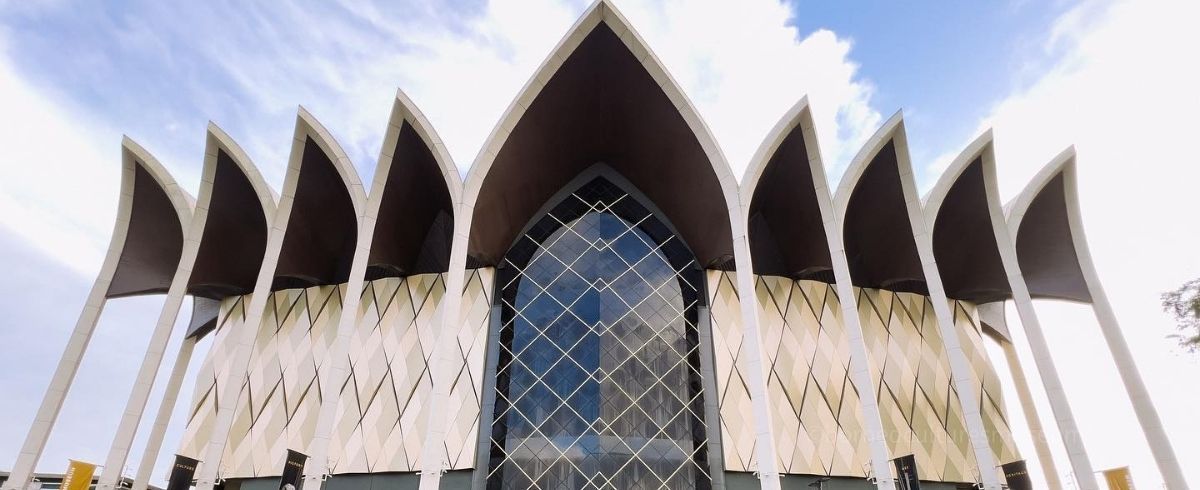Immersive Experience at Borneo Cultures Museum
Immersive Experience at Borneo Cultures Museum
Blog Article
Explore the Interesting Globe of Borneo's Cultural Heritage: A Comprehensive Guide to the Cultures Gallery Experience
Immersing oneself in the intricate tapestry of Borneo's cultural heritage belongs to starting a trip through time and custom. The fusion of aboriginal people, traditional inventions, fascinating efficiencies, and historic stories housed within the confines of the island's museums offers a peek right into a world including vibrant personalizeds and profound heritages. As visitors traverse with these repositories of culture, they are beckoned to explore a realm where past and existing intermingle, inviting reflection on the resilience and splendor of Borneo's diverse heritage.
Indigenous Tribes of Borneo
Borneo is home to over 50 aboriginal people, each with unique cultural techniques and practices that have actually been maintained for generations. Among these tribes are the Iban, recognized for their standard longhouses and complex tattoos where multiple households stay.
These indigenous people play a crucial function in preserving Borneo's abundant cultural tapestry. Regardless of external influences and innovation, lots of tribes continue to promote their ideas, custom-mades, and languages. Visitors to Borneo have the opportunity to involve themselves in the special way of lives of these people through social scenic tours, homestays, and community-based tourism campaigns. By involving with these indigenous communities, visitors can gain a much deeper gratitude for the diversity and strength of Borneo's native heritage.
Conventional Handicrafts and Artefacts

One noticeable example of standard handicrafts in Borneo is the manufacturing of woven products - Borneo Cultures Museum. Competent weavers utilize natural fibers like pandan, bamboo, and rattan delegates develop detailed baskets, floor coverings, and devices decorated with vivid patterns that hold symbolic significances within the area
The art of woodcarving is one more significant aspect of Borneo's traditional handicrafts. Artisans carve intricate styles right into numerous sorts of timber to generate masks, sculptures, and music instruments that not just offer functional purposes yet likewise hold social importance, commonly portraying folklore or spiritual beliefs.
Moreover, Borneo is renowned for its beadwork, with artisans thoroughly crafting grains from products like glass, seeds, and coverings to develop jewelry, apparel embellishments, and attractive items that showcase the region's dynamic aesthetic customs. These conventional inventions and artifacts not only work as concrete expressions of Borneo's cultural heritage yet also offer understandings into the communities' ideas, worths, and lifestyle.

Cultural Performances and Festivals
With a deep-rooted connection to their social practices, the areas in Borneo come to life with vibrant social performances and events that celebrate their heritage. These events showcase the rich diversity of Borneo's ethnic teams, each offering distinct dancings, music, and routines that have actually been passed down via generations. One of the most renowned celebrations is the Gawai Dayak, celebrated by the Dayak people to mark the rice gathering period. During this event, typical music fills the air, complex dances are done, and fancy standard costumes are used. One more significant occasion is the Pesta Kaamatan, celebrated by the Kadazandusun neighborhood to appreciate for the rice harvest. This festival includes social efficiencies, including the Sumazau dance, and conventional sporting activities like the bamboo dance. Site visitors to Borneo can immerse themselves in these festivities, gaining a deeper understanding of the region's social heritage and experiencing the warm friendliness of its people. Cultural efficiencies and festivals function as a lively suggestion of Borneo's abundant cultural tapestry and the value of maintaining these practices for future generations.
Historical Narratives and Artefacts
Discovering the historic narratives and artifacts of Borneo provides a remarkable glimpse into the region's rich past and this link social advancement. Borneo's historical tapestry is woven with varied influences, mirroring the interactions between aboriginal people, Chinese traders, European colonizers, and Malay sultanates. The artefacts discovered in Borneo display this complex background, ranging from conventional crafts like complex beadwork and woodcarvings to archaeological treasures such as old pottery and tools.
One of one of the most engaging elements of Borneo's historic stories is the preservation of oral practices passed down through generations. These tales give insights into the beliefs, customs, and lives of Borneo's occupants throughout the centuries. The artefacts unearthed from historical sites use substantial connections to these narratives, enabling site visitors to witness the material culture of past cultures firsthand.
Contemporary Cultural Conservation Initiatives

Furthermore, curricula and cultural exchange activities play a crucial role in elevating awareness about the significance of protecting Borneo's special social heritage. By involving institutions, museums, and the broader neighborhood in conversations and activities that commemorate Borneo's varied societies, preservation efforts can acquire momentum and assistance for long-term sustainability. Collaborations in between governmental bodies, non-profit companies, and local neighborhoods are necessary in driving these preservation undertakings forward, making sure that Borneo's rich cultural heritage stays vivid and valued for generations to come.
Verdict
To conclude, the social heritage of Borneo is abundant and diverse, with indigenous tribes, standard handicrafts, social efficiencies, festivals, historic stories, and my blog contemporary conservation initiatives all adding to its individuality and relevance. Site visitors to Borneo's cultural galleries can get a much deeper understanding and admiration of the area's cultural heritage, enabling a much more immersive and informing experience.
Immersing oneself in the intricate tapestry of Borneo's social heritage is similar to embarking on a voyage with time and custom.With an ingrained link to their social practices, the areas in Borneo come alive through vibrant original site cultural efficiencies and events that celebrate their heritage. Social efficiencies and celebrations offer as a vibrant reminder of Borneo's rich cultural tapestry and the value of maintaining these customs for future generations.
Moreover, instructional programs and cultural exchange tasks play an important role in raising understanding regarding the significance of maintaining Borneo's unique social heritage. Partnerships in between governmental bodies, charitable companies, and neighborhood communities are important in driving these preservation undertakings onward, guaranteeing that Borneo's abundant social heritage continues to be lively and treasured for generations to come.
Report this page